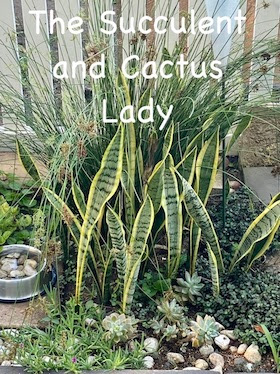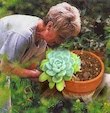W&N watercolour on Bockingford 300gsm
A watercolour sketch of Mother-in-law’s Tongue (Sansevieria trifasciata laurentii) in a pot.
Indigenous to South Africa, it is also known as the Snake Plant. It is a truly remarkable and striking easy care house plant native to tropical West Africa from Nigeria east to the Congo. I remember my dad having one on a windowsill in our house, where it stood for absolutely years without any seemingly extra care. The modern trend in the average home is to keep the plant separate from others and have it standing bold and alone.
Summer growers. As with all succulents, Sansevierias require a well-drained mix and moderate watering. Water frequently during the warmer months and keep fairly dry through winter. To maintain their best shape and colouration they are best grown in dappled sunlight. Grows up to 3 or 4 feet tall.
Propagation is by division or leaf cuttings. Sansevieria is easy to divide because it has shallow roots. Simply turn the pot on its side and pull out the entire plant. Use a sharp knife to cut through the thick roots and pot each clump separately. To propagate Sansevieria by leaf cuttings, cut leaf into 2-inch (5 cm) pieces and place them right side up (the way they were growing) in moist perlite or cactus potting mix.
Indigenous to South Africa, it is also known as the Snake Plant. It is a truly remarkable and striking easy care house plant native to tropical West Africa from Nigeria east to the Congo. I remember my dad having one on a windowsill in our house, where it stood for absolutely years without any seemingly extra care. The modern trend in the average home is to keep the plant separate from others and have it standing bold and alone.
Summer growers. As with all succulents, Sansevierias require a well-drained mix and moderate watering. Water frequently during the warmer months and keep fairly dry through winter. To maintain their best shape and colouration they are best grown in dappled sunlight. Grows up to 3 or 4 feet tall.
Propagation is by division or leaf cuttings. Sansevieria is easy to divide because it has shallow roots. Simply turn the pot on its side and pull out the entire plant. Use a sharp knife to cut through the thick roots and pot each clump separately. To propagate Sansevieria by leaf cuttings, cut leaf into 2-inch (5 cm) pieces and place them right side up (the way they were growing) in moist perlite or cactus potting mix.
I don't have one of these plants, so getting one is next on my list!
.




